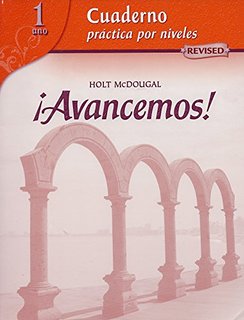
All Solutions
Page 99: Vocabulario A
The objective of this exercise is to practise Spanish vocabulary.
A list of ten foods is given in this exercise. Read through the list and understand what each word means. Then, put an X next to the foods you consider breakfast foods. Below, you will find a glossary to help you complete the exercise.
cereal – cereals
huevos – eggs
banana – banana
hamburguesa – hamburger
manzana – apple
jugo de naranja – orange juice
pizza – pizza
sándwich de jamón y queso – ham and cheese sandwich
refrescos – soft drinks
sopa – soup
In Spain, if you go looking for a banana, you would ask for a “plátano”. The word “banana” is not used at all, however the people understand what it means.
Also in Spain, “jugo” is juice whilst it still belongs to the fruit. When extracted, it becomes “zumo”, like “zumo de naranja” for example. Regarding meat, you would always use “jugo”, before and after cooking.
In many Spanish-speaking countries, “sándwich” – or “sángüich” – would be called a “bocadillo”.
The purpose of this exercise is to practise using Spanish vocabulary.
There are four incomplete sentences in this exercise. You will read the sentences carefully and decide which word from the box fits in the context. As you read the sentences, pay attention to what they mean and focus on grammatical features since each word from the box with match the word it agrees with. You may refer to the below solutions for further guidance.
2. leche
3. tengo hambre
4. compartir
The purpose of this exercise is to practise writing in Spanish.
There are three personal questions in this exercise. Read them carefully and respond in full sentences according to your preferences. Only refer to the below examples as a reference of how your responses should look like.
1.A. Sí, me gusta comer la sopa en la cena.
1.B. No, no me gusta comer la sopa en la cena.
2.A. Sí, me gusta beber jugo de naranja.
2.B. No, no me gusta beber jugo de naranja.
3. Me gusta comer fresas, plátanos y moras.

